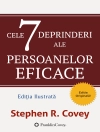After twenty-six-year-old Australian David Carpenter — a psychiatrist and neurological researcher himself — had a breakdown in his first year at Cambridge, his therapist told him, “Go into the Anglican Chaplaincy, investigate Christianity, and have a love-affair with a nice Christian girl.” He did precisely that.
Diana was only twenty. They grew so close that when, after four years, she married someone else, he returned home devastated. They did not meet again for eight years....
Inhoudsopgave
Act I
Act II
Act III
Over de auteur
SHE HAS BEEN PHOTOGRAPHING since the 1950s. In 1960, when she brought home her first colour slides in 35mm format, her father said that one would ‘never get anything ...
Koop dit e-boek en ontvang er nog 1 GRATIS!
Taal Engels ● Formaat EPUB ● Pagina’s 492 ● ISBN 9781770849945 ● Bestandsgrootte 9.2 MB ● Editor Kate Power ● Uitgeverij C&P Books ● Gepubliceerd 2017 ● Editie 2 ● Downloadbare 24 maanden ● Valuta EUR ● ID 5589421 ● Kopieerbeveiliging Adobe DRM
Vereist een DRM-compatibele e-boeklezer












